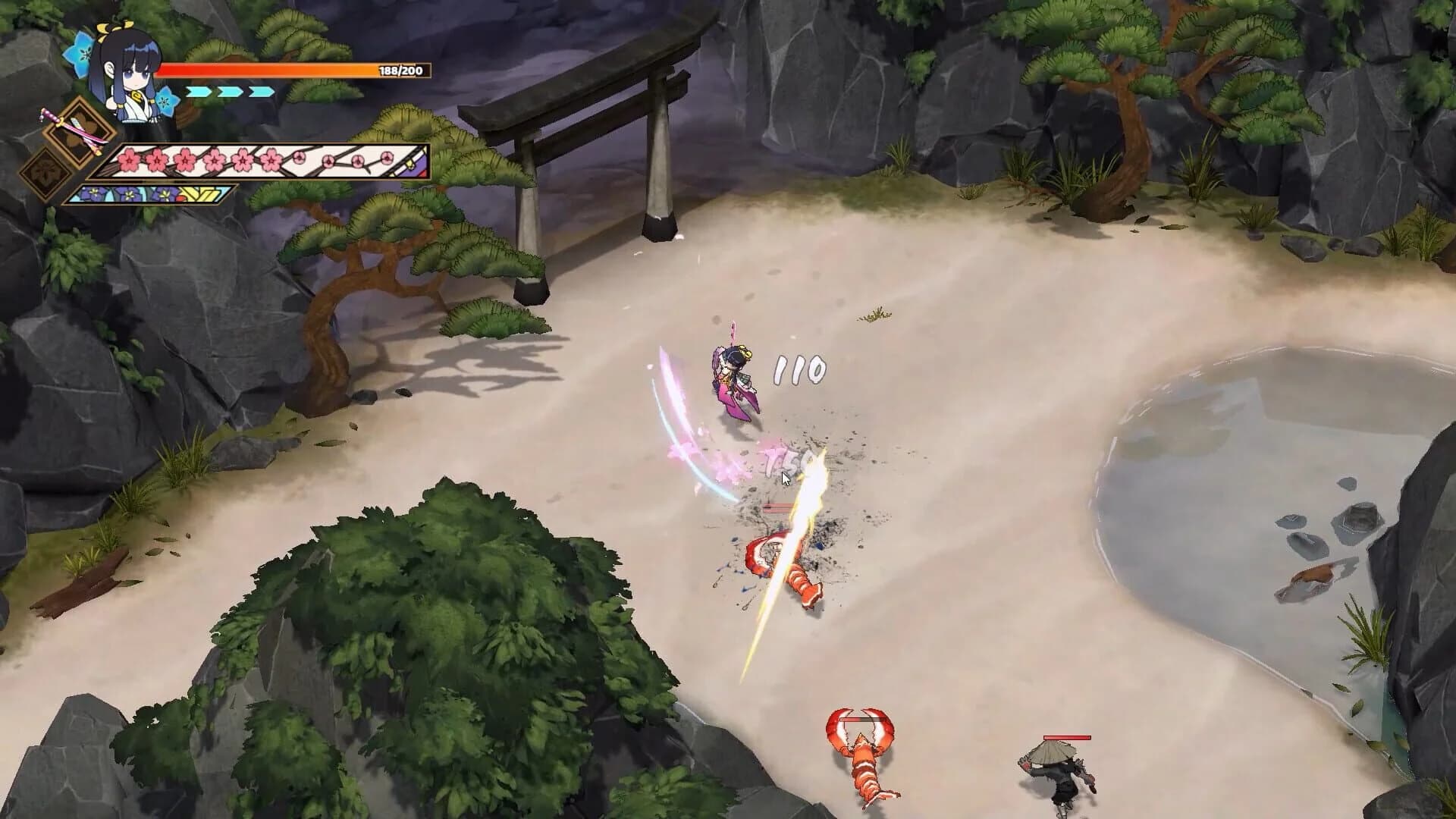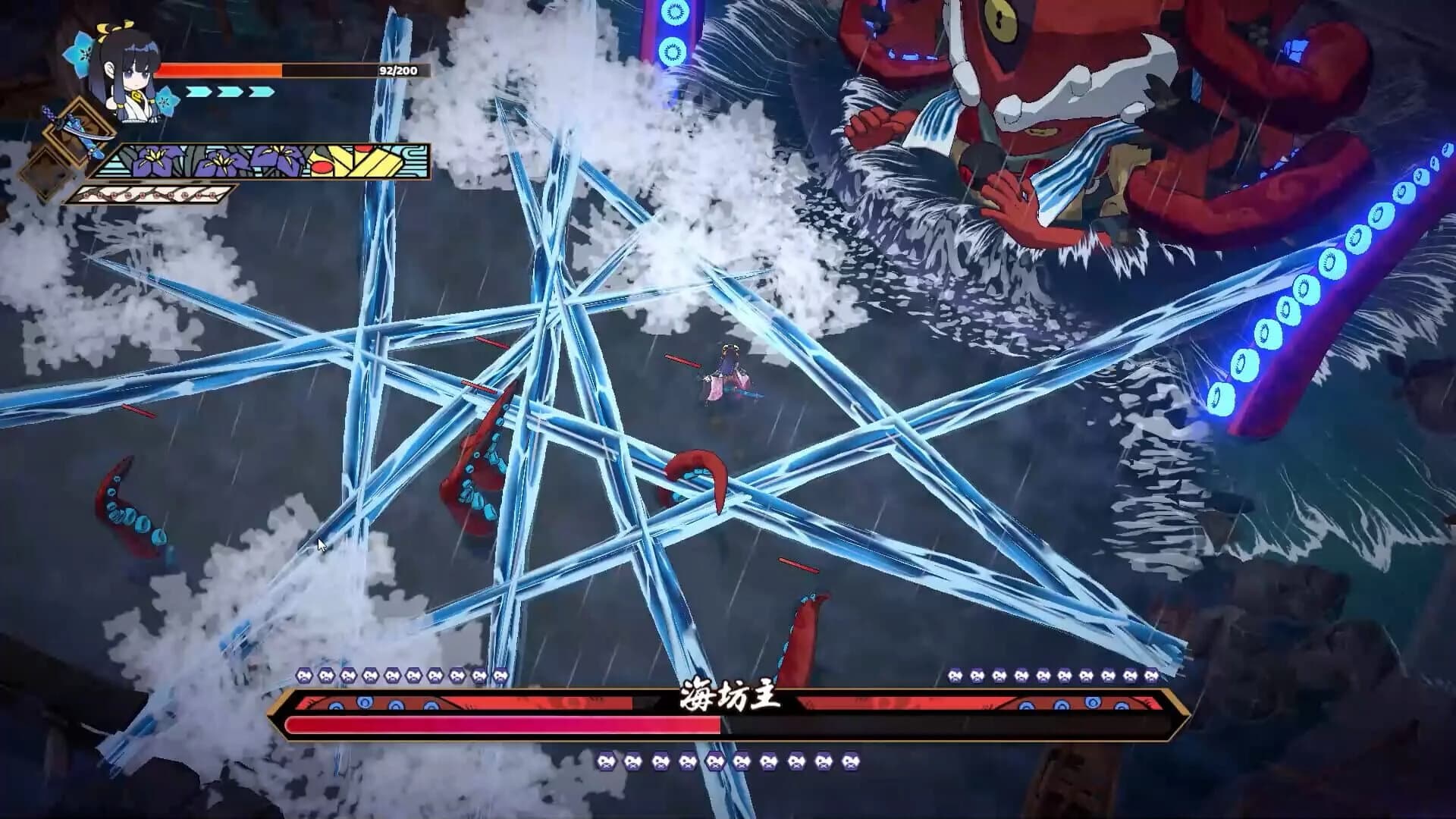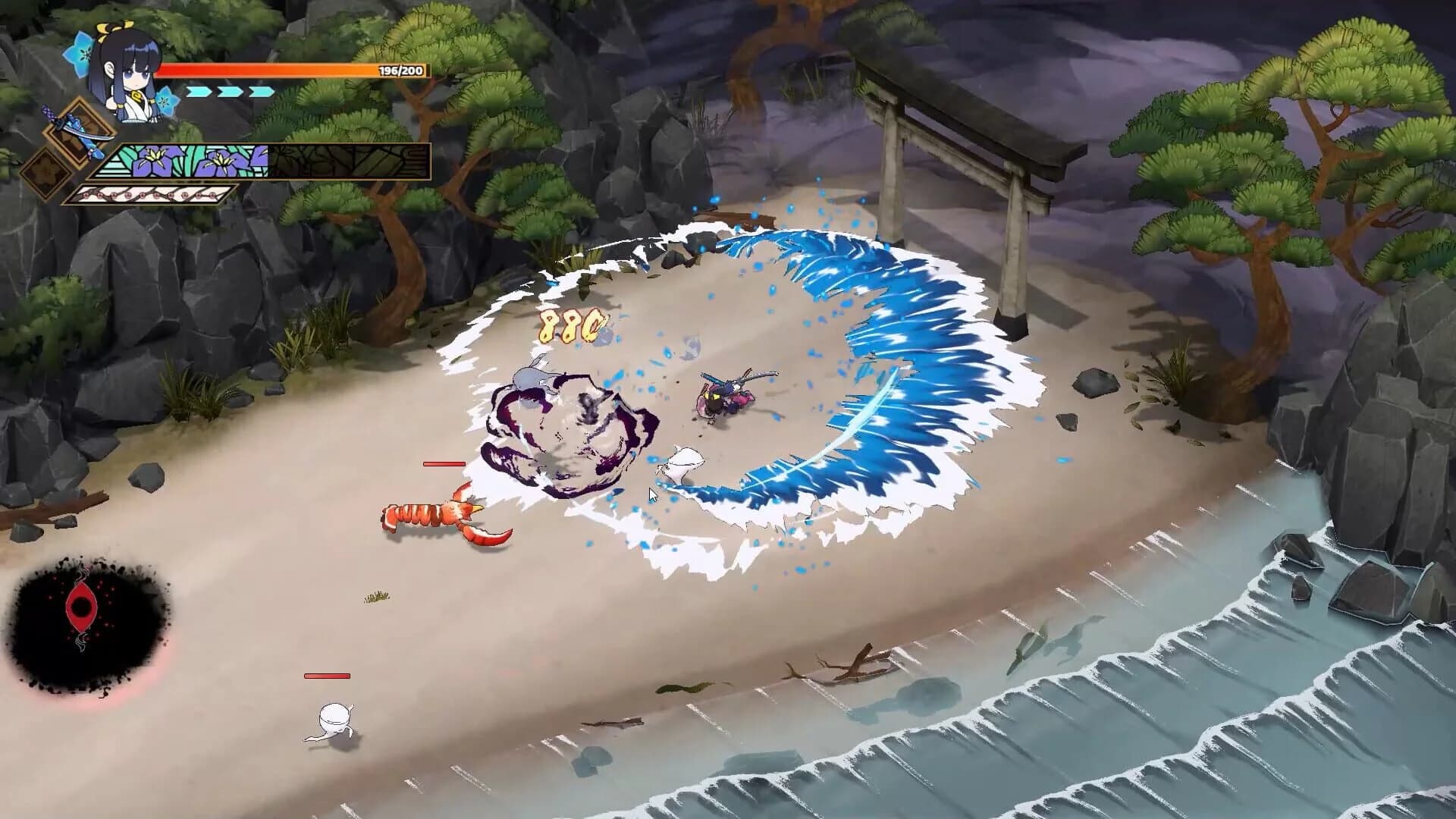
There are games that impress you from the minute you hit “Start,” and Yasha: Legends of the Demon Blade did just that. I grabbed my PS5 controller, expecting another roguelite with a Japanese flair, but what stared back at me was less “Ninja Gaiden” and more a living ukiyo-e painting. Imagine that feeling when Okami first swapped out polygons for brushstrokes-I had a similar electric shiver watching Shigure, my first pick, pose in front of a blood-red moon. The inky outlines and watercolor backdrops set a high bar, one Yasha keeps trying (sometimes desperately) to meet as you play on.
But as I started hacking away at the opening yokai, a thought kept scratching at the back of my head: could this wild style make up for anything the rest of the game stumbles over? I was determined to find out, katana in hand, and trust me-I got slashed, burned, and wowed in equal measure.
I’m a sucker for character selection in any game—too many years spent agonizing over which RPG protagonist to choose. Yasha gives you three: Shigure, the “immortal ninja” who’s all about counters and surgical strikes; Sara, a hulked-up Oni dashing across screens with twin blades; and Taketora, the big demon samurai swapping between sniping with a bow and smashing stuff up close. I started with Shigure because, let’s face it, who doesn’t want to feel stylish parrying demonic claws with a flick of the wrist?
The real surprise, though, was how each character actually felt different to run through a level with. That classic rogue-lite promise, “no two runs the same,” is only true if you swap heroes and get their unique story segments. The catch? Early on, I died a lot. Like, a lot. I kept mistiming Shigure’s perfect parries (the window is TIGHT), so when I switched to Sara the Oni, her aggressive tempo finally let me feel like the tables had turned. She’s a whirlwind—bash, dash, bash again. Taketora was, by contrast, the one I struggled to love: his ranged attacks need the one thing this game really lacks—a lock-on. More on that pain later.
By my third night, I’d run through each campaign once, clocking in roughly 18 hours total, and can say this isn’t just a gameplay veneer: finishing every storyline stitched together a far bigger, Rashômon-style puzzle about that damn nine-tailed fox. If you’re in it for pure hack-&-slash action, you’ll love the differences, but the rewards for rerunning with different heroes are actually more nuanced and story-driven than a lot of games in the genre even bother with.
Let’s talk about that aesthetic. I mean, I wish every developer took Yasha’s approach to style. The inky lines, the “bleeding” watercolor backgrounds, the enemy designs that look like some fever-dream kabuki mask—all of it commands attention. Hopping through misty beaches and haunted forests, I’d stop just to stare (and yes, sometimes I died in the process). The boss fights, too, are a visual event—the giant crab early on legitimately made me holler. You can tell the artists loved their craft.

But the much-hyped voice cast? Still missing in action. Aside from some grunts and the occasional battle shout, the story segments are delivered with… dead air. It’s such an unforced error. The narrative sometimes goes full “visual novel”—text-heavy, slow scenes—that would have sparkled with some dramatic readings. But no, it’s silent, save for forgettable background music. Worse, the pacing drags in those scenes without anything to liven them up. At one point (midway through my first Sara run), I realized I was reading everything faster than the dialogue would naturally flow, skipping ahead just to get back to the fighting. That’s not a great feeling, especially for a game that otherwise drips with crafted atmosphere.
Gameplay-wise, Yasha’s a classic roguelite at its bones—run-based, zones cordoned off by death-barriers, stacks of temporary buffs (Soul Orbs), and permanent upgrades saved after each doomed attempt. The rhythm is all about risk and reward: do you go for that tricky mini-boss for a shot at a rare weapon, or play it safe and hoard a healing item because those are beyond scarce?
I’m used to precise, tight parry systems from years of Sekiro, Dead Cells, and a recent addiction to Hades II. So, the parry mechanic here felt right up my alley—until it didn’t. That timing window is unforgiving, and sometimes, it just flat-out doesn’t register. There was this one run (about seven hours in) where I’d timed a dozen parries in a row, only for the next three to whiff, eating a full boss combo and torching my progress. At first, I blamed myself. By the tenth failed attempt—not so much. This lack of feedback (why, game, did I miss?) made me switch to Sara and embrace button-mashing.

Sara is pure catharsis—reckless, fast, but sometimes flimsy. Taketora, the bow user, almost made me rage-quit: no auto-aim, no target lock, just hoping your arrows land while a tengu swoops at you from off-screen. If I could change one thing about the core mechanics, it would be a clean, Sekiro-lite lock-on to help ranged play and make boss fights less “pray and spray.” Right now, the challenge doesn’t always feel earned—just artificially spiked by missing tools.
Now, the food system. I had a blast hoarding ingredients—mushrooms, demon eel, whatever—and nervously cooking up stews at checkpoints. Each meal isn’t window-dressing: these buffs (extra damage, faster cooldowns, emergency healing) absolutely determine if you squeak past the third boss or get squished. It’s a nice bit of flavor (unintentional pun, sorry), breaking up the monotonous “die, upgrade, repeat” thing that often plagues this genre. There’s some real tension deciding whether to hold onto a rare onigiri now or gamble you’ll find better ingredients later.
And then you hit the yokai festival rooms. These are a fever dream—friendly spirits, weird trades, a moment to breathe as lanterns float and eerie music twangs. My first festival, a kappa offered to straight-up trade my best sword for a bag of rice. I took the gamble. I lost the rice, gained a flaming blade, and promptly got cooked two rooms later—but that unpredictability was genuinely fun. The fact that these interludes exist gives Yasha a playfulness most grim roguelites miss.
I adored the first six or seven hours. Then? Some patterns wore thin. The levels might technically shuffle rooms a bit each run, but the basic tilesets, enemy types, and traps repeat a lot faster than you’d hope. After my fifth run, foiling the same ogre ambush for the dozenth time felt more like a checklist than a discovery. Still, the weapon variety and mix-and-match orbs (Shigure-as-fire-tornado is a build I’m still weirdly proud of) give you some leeway. If you’re a “chase every combo” type, you’ll mine extra fun here.

But the bosses? Big yikes. The second boss, honestly, put a hole in my patience. It feels weirdly tuned—showering you with damage and resisting all your early upgrades, especially if you’re unlucky with healing drops. Roguelites thrive on the “just-one-more-run” loop, but here I hit a wall. I even rage-paused, went online, and nodded when I saw entire threads about that boss-block. To be fair to 7Quark, later boss pacing gets more forgiving, but that early roadblock almost broke me.
On the tech side: it just works. At least on PS5, my runs stayed buttery-smooth. No stutters, crashes, or annoying loads. The controls are responsive (parry issues aside), UI is clear, and the animations—especially enemy death flourishes—are genuinely fun to watch. One letdown: the soundtrack. While not grating, I can’t recall a single tune even after hours of play. The audio is pure filler, backing up the art rather than amplifying it.
Here’s where it gets personal. If you love art-forward slashers, hunt for mechanical mastery in your roguelites, or are addicted to “just one more run” loops, Yasha has plenty for you. It doesn’t quite dethrone Dead Cells, Hades, or even Rogue Legacy for charm and replayability, but stands out visually—and if you’re a sucker for Japanese folklore, it nails the vibe. Just be genuinely ready for some frustrations around the parry system, awkward ranged combat, and—a persistent theme—story sections that badly want a voiceover patch in the future.
I want to love Yasha: Legends of the Demon Blade more than I do. The art and combat swagger kept pulling me in, and I lost whole evenings trying just one more run, especially unlocking those final story intersections. But—especially as the hours stacked up—the cracks showed: muted presentation during story beats, boss spikes that punish more than they test, and some stubborn clunk around targeting. Still, I finished my review run (and a bit extra, for fun!) genuinely glad I saw it through, even if my thumbs ached from parry failures. For anyone who wants to lose themselves in a hellish, watercolor dreamscape and can fight through (sometimes literally) the rough edges, Yasha’s a trip worth taking.
Score: 7.5/10
Get access to exclusive strategies, hidden tips, and pro-level insights that we don't share publicly.
Ultimate Reviews Strategy Guide + Weekly Pro Tips